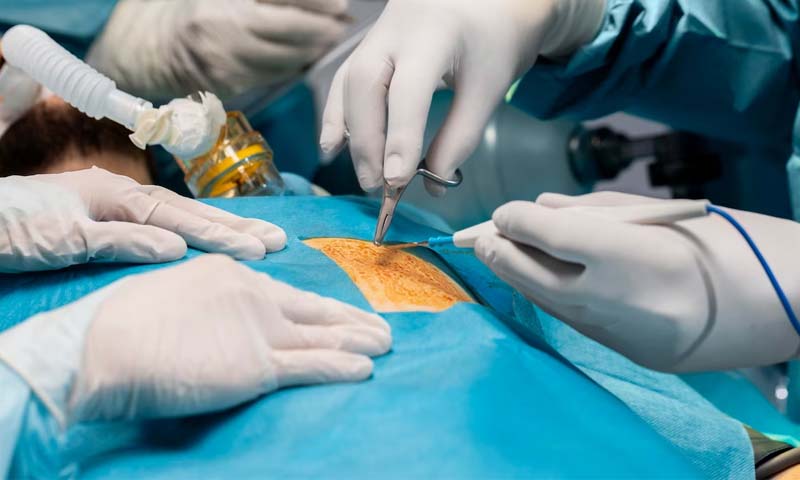Surgical treatment for phimosis
Medically Reviewed by Dr Sravya, MBBS, MS
What is Phimosis?

Although phimosis is not a problem until it causes symptoms like pain, Moreover, some boys are born with phimosis. It means the foreskin is tight or stuck to the penis head. It protects the urethra from germs. Usually, this foreskin becomes loose on its own during the first few years of life.
However, if it does not go away until puberty, Then you must seek medical advice. Because the foreskin does not go away on its own during this period.
Generally, steroid creams are the first treatment for phimosis. However, if it does not work, then surgical treatment for phimosis may be advised.
Types of Phimosis
There are two type of Phimosis. Let’s discuss them in detail.
(i) Physiological Phimosis
Physiological phimosis is a type of phimosis that is normal in male infants. It usually goes away on its own as they get older (5-7 years).
It happens when the foreskin is attached to the head of the penis. It can’t be pulled back easily. Although it isn’t usually a cause for concern. However, it’s important to keep the area clean to prevent infections.
If you’re worried about your child’s phimosis, it’s a good idea to talk to a doctor.
(ii) Pathological Phimosis
It is the type of phimosis that can affect anyone of any age. It may arise due to many reasons, such as poor hygiene, infection, scarring, injury, and inflammation.
Moreover, it can also arise due to skin diseases like eczema. It does not go away by itself. Thus, it requires appropriate medical treatment.
How do you diagnose Phimosis?
This condition is usually detected through a physical examination of the penis. The doctor may also ask you about any symptoms that you or your baby boy may have noticed.
The examination will help you detect other causes of foreskin on the penis, such as balanitis xerotica obliterans. It is a skin condition that can make the foreskin too tight. It also prevents the foreskin from retracting.

What are the Treatments for Phimosis?
If your child is not experiencing any symptoms of phimosis, you should not seek medical treatment. As your child is still young, it would be best if the foreskin retracted naturally.
However, the treatments are recommended for older children. As the foreskin can’t retract after a certain age.
Besides this, your child may also suffer symptoms like pain and difficulty urinating. In some cases, surgery may be the only option to treat this condition.
But first, let’s discuss other treatment options.
(i) Topical corticosteroid therap
It is a non-surgical phimosis treatment. It involves the use of steroid cream or ointment. You have to apply cream or ointment to the tip of the foreskin twice a day. You have to apply it over 4–8 weeks.
They will help stretch the skin more easily. Also, after applying it regularly for 2 weeks, the child or parents can try to slowly stretch the foreskin. But you must keep in mind that it should not hurt or cause damage to the foreskin.
As the foreskin starts to stretch back, you can apply the cream to the exposed front part of the penis. In this way, the foreskin will return to its normal position.
Now let’s understand the surgical treatment for this condition.
(ii) Circumcision
It is a type of surgical treatment for phimosis. It is of two types: Full Circumcision and Partial Circumcision.
In full circumcision, the removal of all foreskin takes place. Besides, in this process, only the tight part of the foreskin can also be removed.
For this, surgeons make lengthwise cuts in two to three places on the tight foreskin and then close the cuts by stitching them together.
In partial circumcision, surgeons don’t remove the foreskin. Thus, the foreskin may become tight again, and the head of the penis can be covered by this foreskin, resulting in phimosis.
But this is not possible in full circumcision because all the foreskin is removed in that case. Thus, the head of the penis can’t be covered by the foreskin. So phimosis is not possible in that case.
Additionally, in this surgical treatment for phimosis, general anesthesia is given to children for these procedures. On the other hand, in adults, an operation is carried out under local anesthesia to numb the area.
Is Circumcision Necessary to treat phimosis?
In most cases, it is not necessary to perform circumcision (surgical treatment for phimosis) unless the infant doesn’t have any symptoms. This decision is based on other factors. Such as cultural, social, religious, etc. According to some religions or cultures, baby boys born with phimosis should be treated to avoid future problems. For example, sexually transmitted infections, etc.
Parental preferences are also the main driving factor in this decision.
In adults, it is more likely that they will suffer from symptoms like pain. So if other options failed to treat phimosis in them, Then circumcision is the only option for them.


















